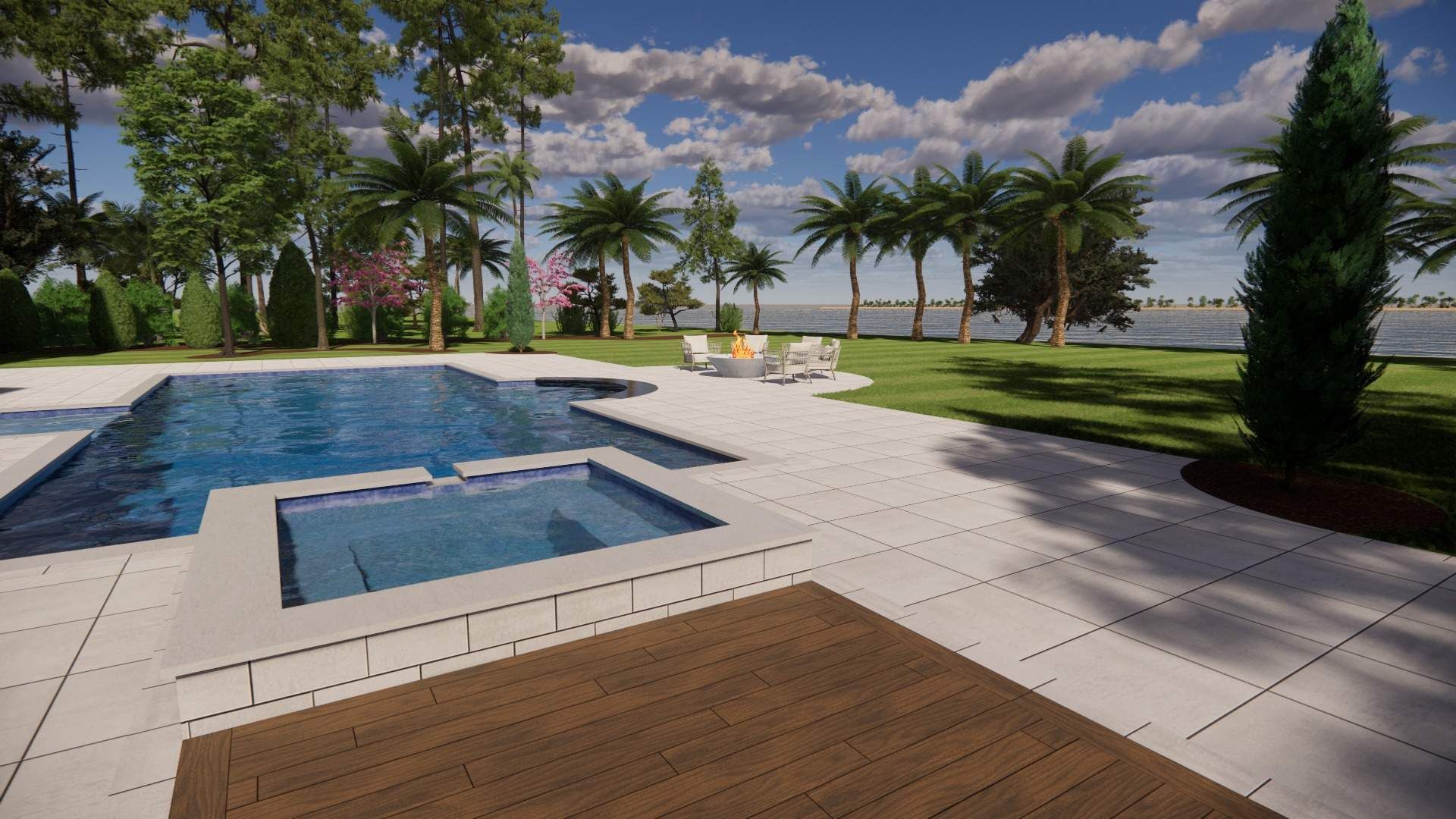Creating Patios with Low-Maintenance Materials

Creating Patios with Low-Maintenance Materials: 5 Brilliant Ideas for Effortless Outdoor Living
Creating a patio with low-maintenance materials is a great way to enjoy your outdoor space without the stress of constant upkeep. You want a place to relax and entertain, not worry about how to keep it looking nice. This article will guide you through materials that are easy to care for and perfect for your Hilton Head Island home.
Key Takeaways
- Low-maintenance materials save time and money.
- Popular choices include concrete, pavers, and synthetic decking.
- Think about your patio’s style and use when selecting materials.
- Proper planning leads to a beautiful and functional outdoor space.
For additional information on enhancing your outdoor experience, consider exploring options for outdoor kitchens that can complement your new patio.
Why Choose Low-Maintenance Materials?
Low-maintenance materials are helpful for busy homeowners. You want your outdoor space to be enjoyable. When you use materials that require little care, you can spend more time relaxing and less time working. This is especially important in Hilton Head Island, where beautiful weather invites outdoor fun.
What are Low-Maintenance Materials?
Low-maintenance materials are those that do not need much care to stay looking good. They resist fading, staining, and wear. Some examples are:
- Concrete: Durable and easy to clean.
- Pavers: Available in many styles and colors.
- Synthetic decking: Looks like wood but does not rot or fade.
Comparison of Low-Maintenance Materials
Material Durability Cost (per sq. ft.) Maintenance Level
- Concrete High $5 - $10 Low
- Pavers Moderate-High $6 - $15 Moderate
- Synthetic Decking High $10 - $20 Low
- Popular Low-Maintenance Patio Materials
Let’s look at some popular low-maintenance materials that work well for your patio.
Concrete
Concrete is a classic choice for patios. It is strong and can last for years. You can pour it in any shape and color you want. Many people like to stain or stamp concrete to make it look more interesting. Cleaning it is simple—just wash with water and mild soap.
Pros of Concrete
- Easy to customize with stains and stamps.
- Very durable and can handle heavy furniture.
- Low cost compared to other materials.
Cons of Concrete
- Can crack over time if not properly installed.
- Might feel hot in the sun.
Pavers
Pavers come in many shapes and sizes. They are typically made from concrete, brick, or stone. Pavers allow for quick repairs if one gets damaged. Just replace the broken piece without tearing out the whole patio.
Pros of Pavers
- Wide variety of colors and styles.
- Easy to repair if damaged.
- Good drainage, so water does not pool.
Cons of Pavers
- Installation can take more time and skill.
- Weeds may grow between pavers if not sealed.
Synthetic Decking
Synthetic decking mimics the look of wood but requires less care. It does not splinter or fade. This is helpful if you have kids or pets. Just sweep or hose off dirt to keep it clean.
Pros of Synthetic Decking
- Looks like real wood without the problems.
- Does not rot or attract insects.
- Available in many colors.
Cons of Synthetic Decking
- Higher initial cost than wood.
- May get hot under direct sunlight.
Preparing for Your Patio
Before you start building your patio, take some time to plan. Think about how you will use the space. Will it be for family gatherings, barbecues, or quiet evenings? Your answers will help you choose the right materials.
Choosing the Right Location
Pick a spot that fits your lifestyle. Look for a flat area with good sun and shade balance. Make sure it is not too close to trees that might drop leaves or branches.
Size Matters
Decide how big you want your patio to be. It should be large enough for your furniture and guests but not so big that it feels empty. A good size for a family of four is at least 12 by 16 feet.
Design Ideas
Think about the look you want for your patio. Do you want a simple design or something more elaborate? Consider adding features like:
- Seating walls: Create extra seating without furniture.
- Fire pits: Great for cool evenings.
- Planters: Add greenery and color.
Additional Considerations
- Budget: Set a budget for materials and labor.
- Accessibility: Ensure easy access from your home to the patio.
- Zoning Regulations: Check local zoning laws that may affect your patio size or placement.
Installation Tips
Once you have your plan, it’s time to install your patio. Here are some tips to make it easier.
Preparing the Ground
Start by clearing the area. Remove grass, weeds, and rocks. Dig down about 4 to 6 inches. This gives enough depth for your materials.
Base Layer
Add a base layer of crushed stone or gravel. This helps water drain and keeps your patio stable. Level it out and compact it using a tamper.
Laying the Material
Now it’s time to lay your materials. If you are using pavers, start from one corner and work your way out. Use spacers to keep the gaps even. For concrete, pour it slowly and spread it evenly.
Finishing Touches
Once everything is in place, add sand between pavers if you used them. This prevents weeds and keeps them tight. For concrete, smooth the surface and add a sealer if desired.
Maintaining Your Low-Maintenance Patio
Even low-maintenance patios need some care. Here’s how to keep yours looking great without much effort.
Regular Cleaning
Sweep away leaves and dirt regularly. This keeps your patio clean and prevents stains. For deeper cleaning, use a hose and mild soap.
Check for Damage
Every year, inspect your patio for cracks or loose pavers. Fixing small issues early can prevent bigger problems later.
Seasonal Care
In Hilton Head, you might want to give your patio some extra care before summer. Remove any debris and check for loose materials. This helps prepare your space for gatherings.
Stylish Additions to Your Patio
Think about fun ways to make your patio even better. Adding features can make it feel more inviting.
Outdoor Furniture
Choose furniture that matches your style. Consider weather-resistant materials. Chairs, tables, and loungers can make your patio a place to relax.
Lighting
Outdoor lighting can change the mood. String lights create a cozy feel. Solar lights along pathways are practical and pretty.
Shade Options
A patio umbrella or pergola can provide shade. This makes your space usable even on hot days. Consider adding climbing plants for extra style.
Local Considerations for Hilton Head Island
Hilton Head Island has its own weather patterns and local flora. Keep these in mind when designing your patio.
Weather Considerations
The island can be hot and humid. Choose materials that can withstand those conditions. Look for UV-resistant options if you want colors that last.
Native Plants
If you want to add greenery, consider using native plants. They are easier to care for and attract local wildlife. Plants like palmettos, azaleas, and camellias thrive well in our area.
Local Regulations
Before starting your project, check local regulations. Some areas require permits for building patios. This can save you trouble later.
For more insights on landscaping options that complement your outdoor space, explore ideas for garden design that can enhance your patio aesthetics.
Conclusion
Creating a patio with low-maintenance materials is a smart choice. You can enjoy your outdoor space without constant upkeep. By choosing the right materials and planning carefully, your patio will be a great addition to your home. Whether you prefer concrete, pavers, or synthetic decking, you can build an area that is stylish and functional.
If you are ready to transform your outdoor space, reach out to Hilton Head Landscapes. We can help you create the perfect patio for your home. Contact us today to get started!
This article gives you all the information you need to create a beautiful patio with low-maintenance materials right here in Hilton Head Island, South Carolina. Remember, a well-planned patio can be a great place for family and friends to gather. You will enjoy it for years to come!



